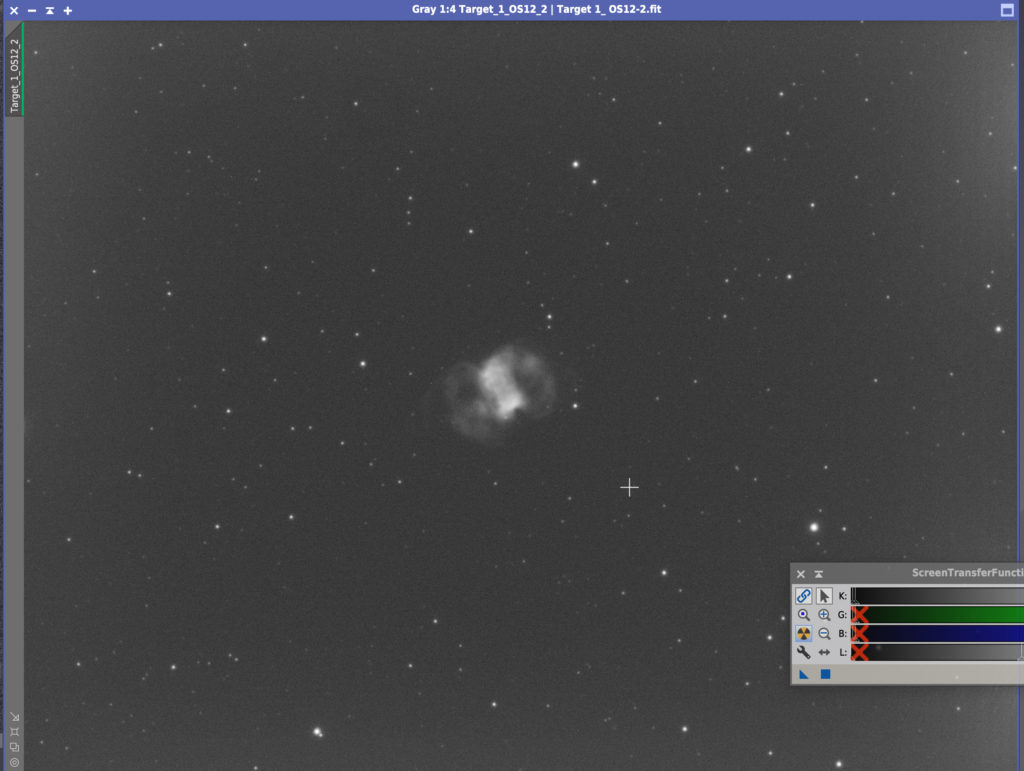Viewing time period – 17:31 – 01:48
After nearly a month of not imaging from IMT due to a holiday in Tenerife, a week in New York with work and then Manchester and London along with a run of poor weather it was clear on a Saturday night! Another evening commissioning the observatory was needed, so tonight we will again further refine the polar alignment since the last major modification and distribution of weight where we changed the adjustment plate for Bob’s Tank FS 102 OTA. Again we plan to drift align with PHD.
First thing is to find a star near the celestial equator near the Meridian so that it would display the most movement and thus magnify the error of miss polar alignment. I should be able to find HP 95501 @8pm.
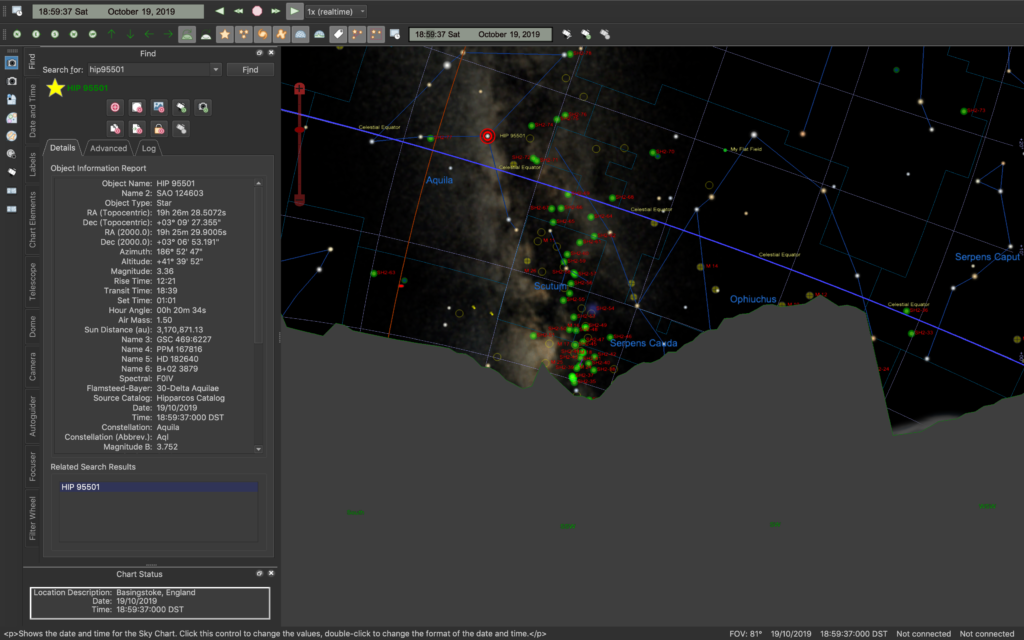
Next I performed an autofocus using the Luminance filter. HIP 95501 is the star to choose for drift aligning the first part, a 1 second image within Frame and Focus in SGPro showed it just off centre which was fine.

Next I moved the star to place in the Lodestar FoV. Now I can measure the azimuth polar error, ALWAYS ignoring the RA line. Looking at the Dec line I could see I was out by 2.43′ and 39px. I adjusted the thruster knobs on the MEII to move the star to the outset edge of the purple circle showing the error, in this case the right thrust in and left thrust out. I then drifted again and make sure the purple circle gets smaller and the DEC line a much shallower angle.

I adjusted again and got the azimuth error down to a respectable 0.08′ 5px error.
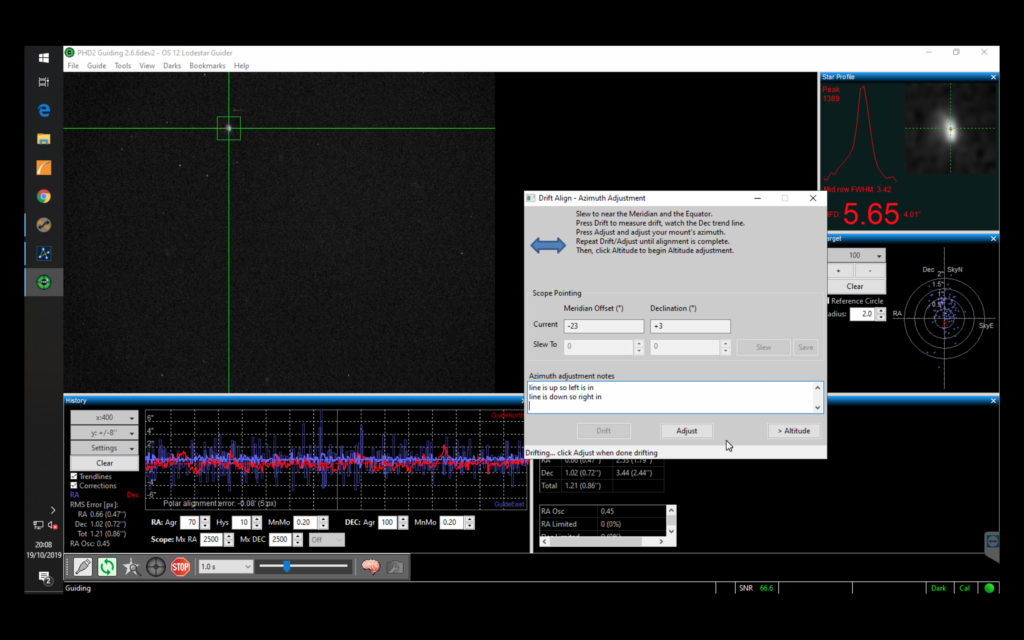
The graph on PHD2 should started to look fairly flat, and so I then attempted to fix the polar error for altitude. I selected a star in the West and near the celestial equator such as Rasalgethi in Hercules.

I watched the DEC line only and ignored the RA, the DEC line this time reflecting the error in altitude. Then I adjusted the mount using the altitude adjustment spanner moving the star again to the outside of the purple circle and then retested, finally getting the error down to a suitably small number after only 1 turn of 0.12′ 5px error.
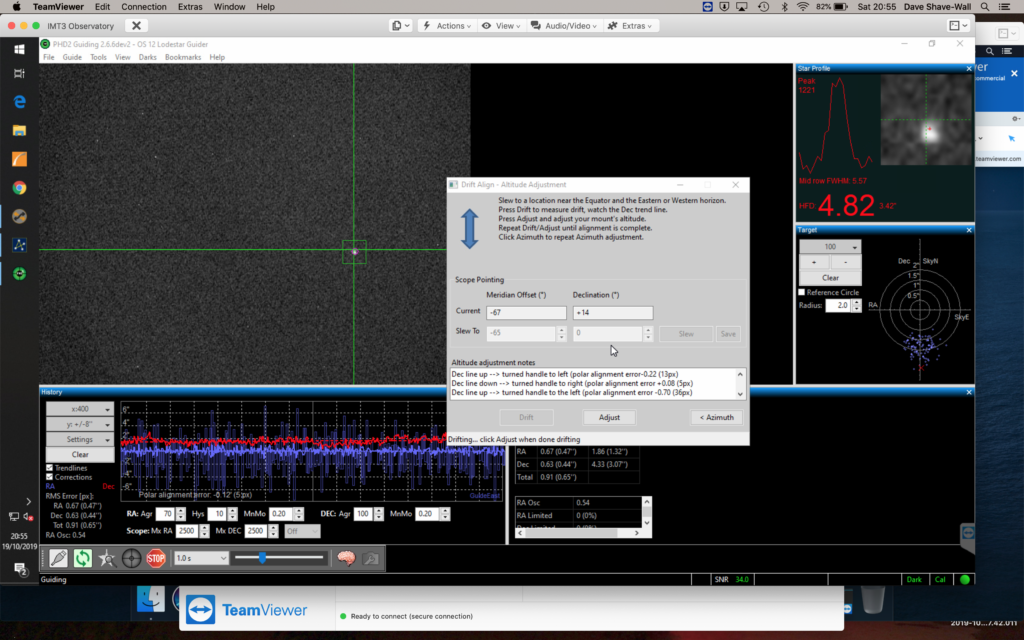
Unfortunately at the extreme West I could only expose unguided for 1min on the 12″ at 2.5m focal length, the stars otherwise looked trailed.
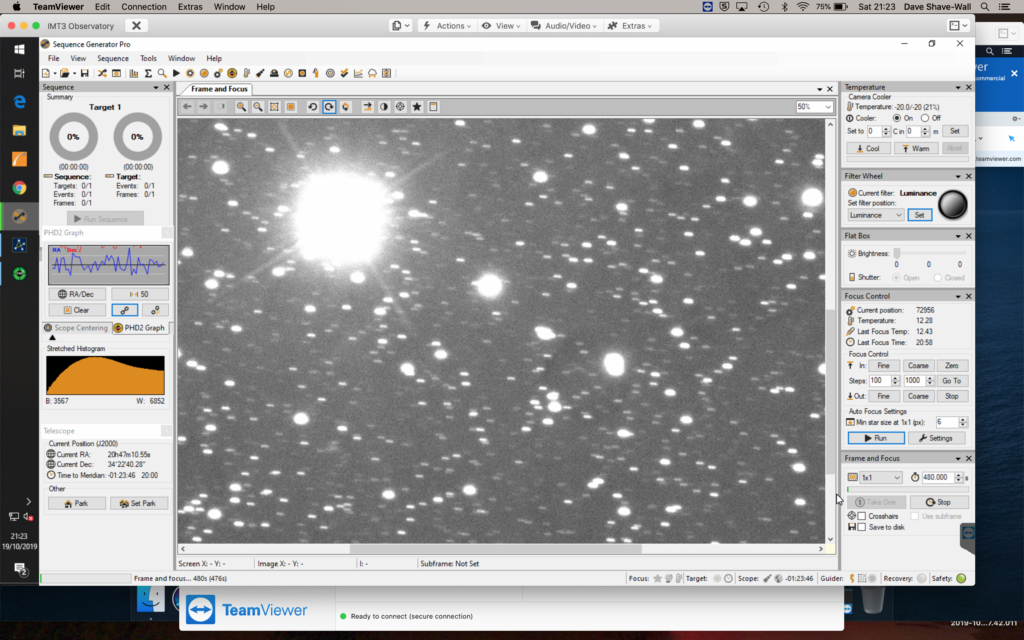
I then went to near the meridian and a 4 min exposure produced nice sound stars.
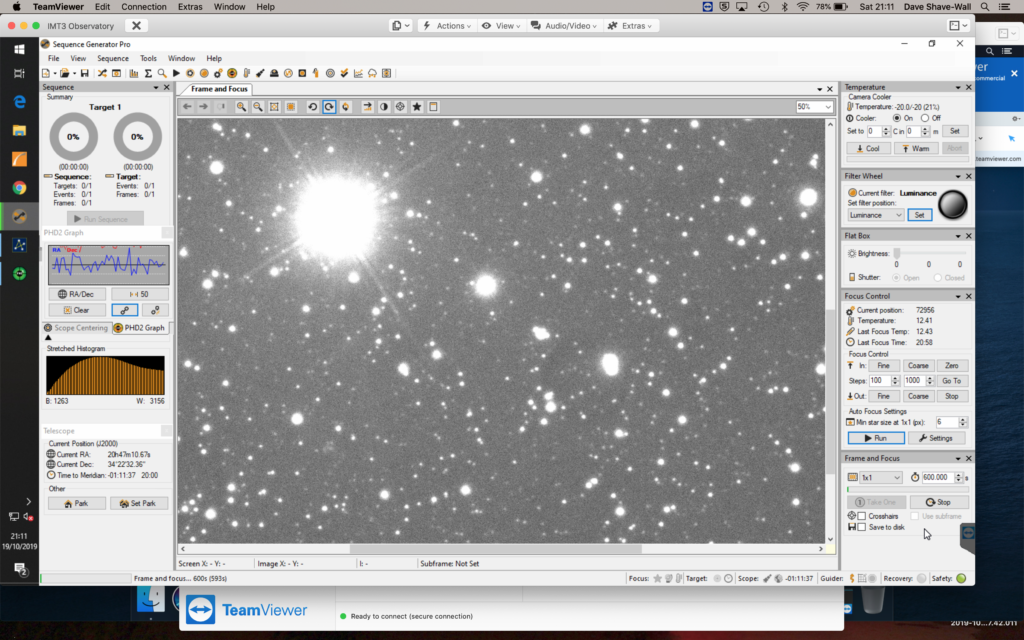
I then went on to do an automated TPoint run, but the problem seemed to be that a large number of samples could not be solved. The resulting TPoint model of 118 samples of which only 90 were usable, was worse than the 60 point model I had before. I will therefore redo the TPoint model the next time it is clear.
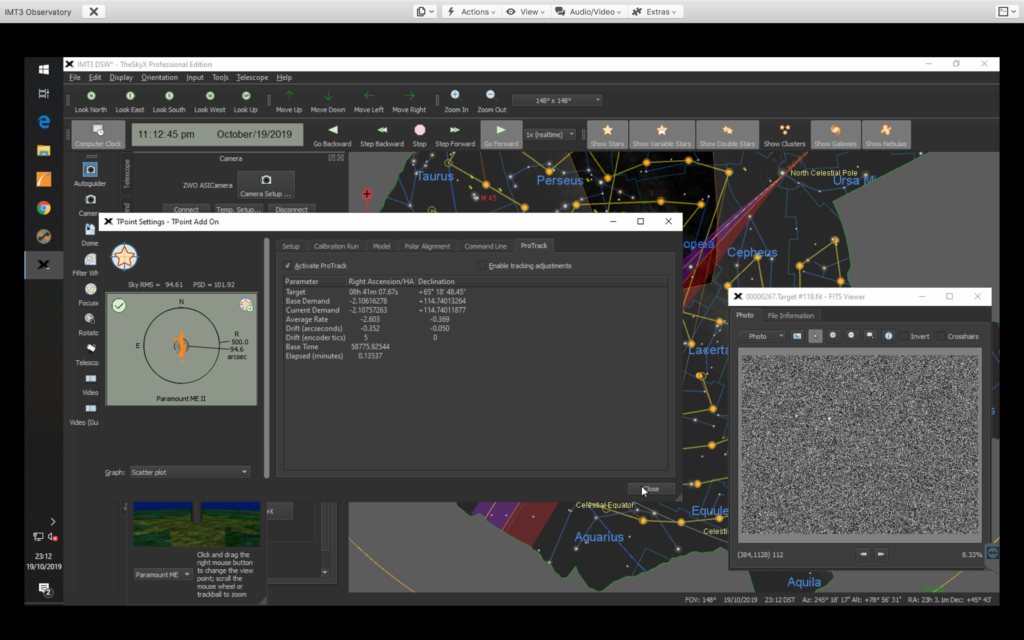
The whole 118 model took approximately 1.5 hours to complete which is so much better than a manual model.

The good thing is the TPoint model told me the polar alignment is excellent!
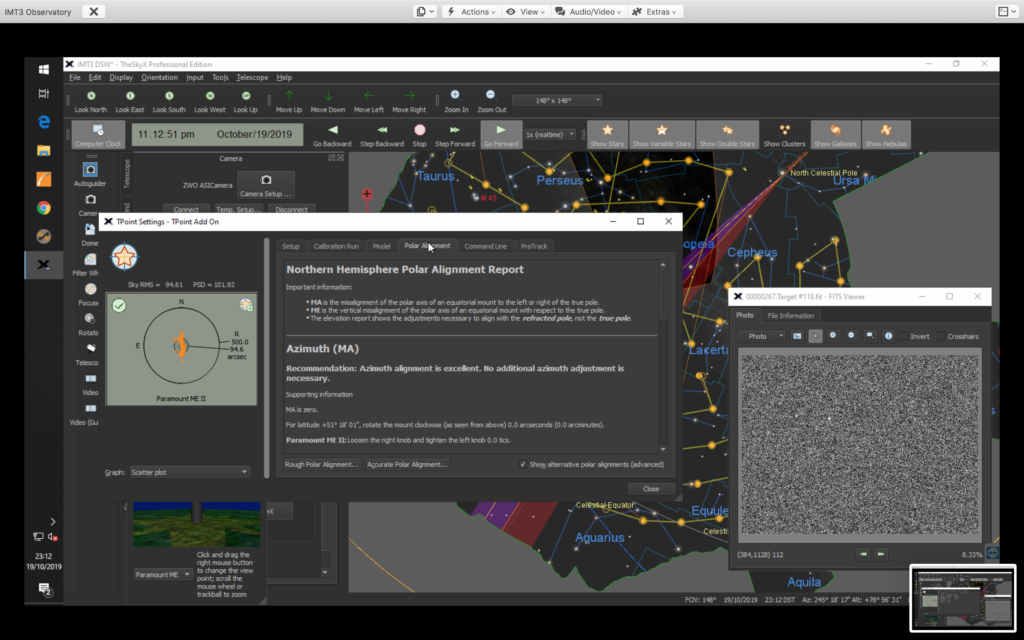
It is now @23:30 so I went on to start imaging. First I needed to perform a focus run on Luminance which I did.

I then slewed to M76 to start my image run, a 30s exposure showed stars in focus and little dumbbell prominent in OIII.
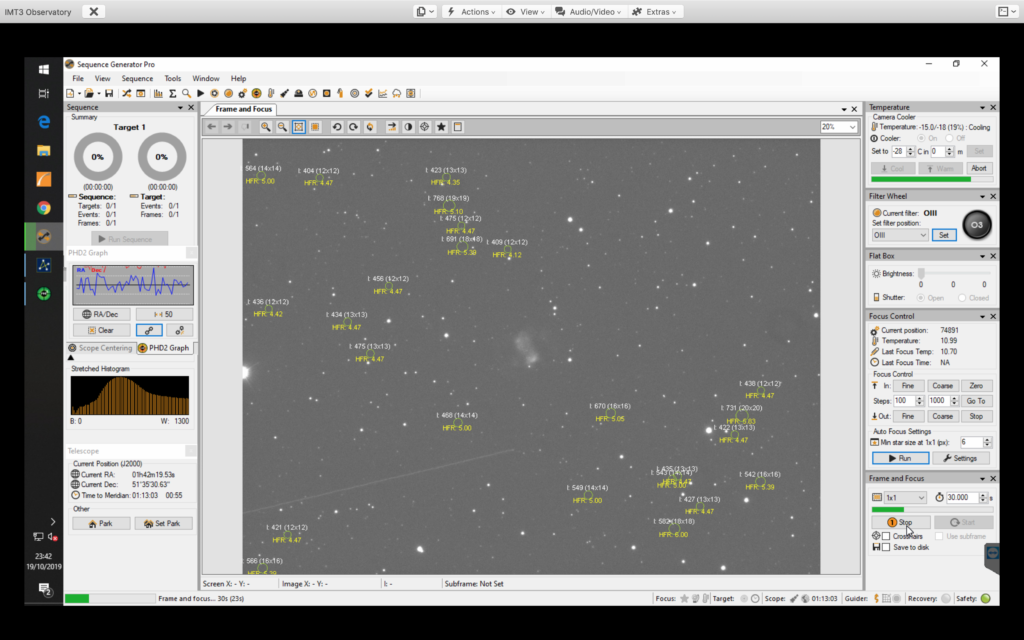
This time round I decided to set the Gain to 139 and the Offset accordingly to 21. I also decided on a 10min exposure rather than 20mins front the last set.
